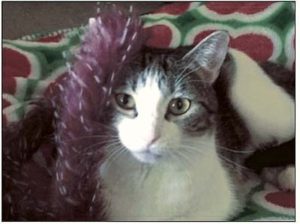Mahatma Gandhi said it best, “The greatness of a nation and its moral progress can be judged by the way its animals are treated.” The same can be said of the states in a nation.
In fact, the greatness and moral progress of all 50 states can be traced through the years by the consistent strengthening of state laws against animal cruelty to include felony provisions. This moral and legal progress has been based on the growing understanding of the link between animal cruelty and violence against humans.
Today, academic journals and textbooks in child welfare, human-animal studies, sociology, child development, criminology, psychology, social work, veterinary medicine, and many other disciplines accept the incontrovertible link between animal abuse, domestic violence, child maltreatment and elder abuse.
Understanding this link, the FBI now requires local law enforcement to track and report animal cruelty the same way homicide, arson and assault are tracked – as a Group A felony.
So, why would any Arizona legislator want to turn back the clock on progress that has taken decades to achieve? Why would any legislator want to strip any animal of any protection provided by the law?
Why would Arizona legislators David Gowan and Brenda Barton work behind closed doors with corporate agriculture lobbyists to craft a bill (HB 2330) designed to repeal the few protections millions of animals have in Arizona?
HB 2330 is not an isolated attempt to repeal Arizona’s animal cruelty laws. Last year enough Arizona legislators supported a similar bill (HB 2150) that it would have been the law of the land today except for Governor Ducey’s veto.
Fortunately, this year’s coup against animal welfare may have died in the Agriculture, Water and Lands Committee when they wisely chose to not agendize HB 2330.
However, the bill could still be resurrected by the House Appropriations Committee this year or introduced in another permutation next year. Animal advocates must remain vigilant in a state where politicians seem strangely determined to weaken animal-cruelty laws.
Apart from some Arizona legislators, animal abuse is widely recognized and understood by law enforcement, public health officials and decent human beings everywhere to be part of a continuum of violence with serious implications for multiple victims and society as a whole.
While Gandhi drew our attention to the societal ramifications of how we treat animals, Immanuel Kant provided some insight into how we should judge politicians who deliberately put animals in harm’s way. “He who is cruel to animals becomes hard also in his dealings with men. We can judge the heart of a man by his treatment of animals.” This maxim serves as a reliable gauge for assessing the character of politicians who have the power to impact how animals, and people, are treated on a massive scale.
Sponsors and supporters of last year’s HB 2150 and this year’s HB 2330 have telegraphed their agenda to reverse Arizona’s moral progress by revoking protections animals in Arizona have benefited from for decades. They have exposed their intent to put the welfare of millions of animals at risk without any corresponding benefit or legitimate justification. They need to know this is not going unnoticed.
Refer to my Feb. 17 column, “Lawmakers target animals again” to understand the risk of cruelty that HB 2330 posed for millions of animals.





